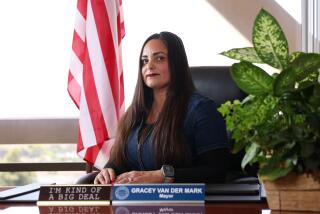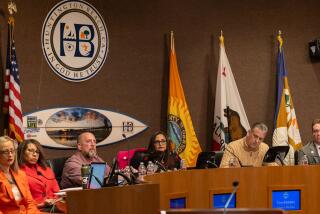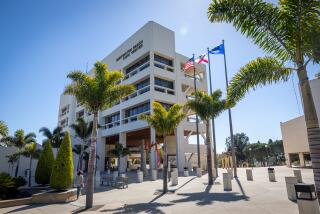Civil rights group to petition renaming of Robert E. Lee Elementary in Long Beach

For more than a century, Robert E. Lee Elementary School, bearing the name of the commander of the Army of Northern Virginia, has avoided scrutiny over its name.
A civil rights group plans to deliver a petition to Long Beach school district officials Monday afternoon demanding that an elementary school named after Robert E. Lee, the commander of the Confederate Army, be changed.
“The petition is endorsed by many local civil rights leaders and is signed by dozens of concerned citizens,” said Pedro Baez, political director of the Los Angeles Urban Policy Roundtable.
The request comes a week after the civil rights group launched an online campaign to pressure officials to change the name of the Long Beach school.
The school, along with another in San Diego, are the latest targets of a nationwide movement to remove symbols of the Confederacy from public facilities.
The movement comes in the wake of the fatal mass shooting of nine black men and women worshipping last month at Emanuel African Methodist Episcopal Church in Charleston, S.C.
Photos of the suspect, 21-year-old Dylann Storm Roof — who authorities believe wanted to start a race war — show him posing with the battle flag of the Confederacy.
Most of the scrutiny fell on the battle flag, but eventually spread to monuments, schools and other public facilities that pay homage to figures of the losing side of the Civil War.
It’s not the first time Long Beach officials have considered renaming a school within the district.
Last September, the school board changed an elementary school named after Peter H. Burnett, the first civilian governor of California.
Burnett signed into law the creation of the first 27 counties, including Los Angeles, Santa Barbara and San Francisco.
Before his arrival in California, Burnett served on the 1844 Legislative Committee of Oregon. While there he proposed that former black slaves be forced to leave that state, with any who failed to leave subject to arrests and lashings. That provision was known as “Peter Burnett’s lash law.” Voters later rescinded the law in 1845.
A year after moving to California, Burnett was elected as the first governor of the state in December 1849. During his inaugural address he endorsed a similar black exclusion law.
Burnett received heavy criticism for the speech and became unpopular with the state’s legislature. After just a little over a year in office, he resigned.
Scrutiny over a school being named after Burnett came after an instructor raised concerns. It was later renamed after the Long Beach school board’s first African American member, Bobbie Smith. The Press-Telegram first reported about the school’s name.
According to state records, there are at least three schools named after Peter Burnett, including one in Hawthorne.
For more Southern California news follow @LATVives
More to Read
Sign up for Essential California
The most important California stories and recommendations in your inbox every morning.
You may occasionally receive promotional content from the Los Angeles Times.











